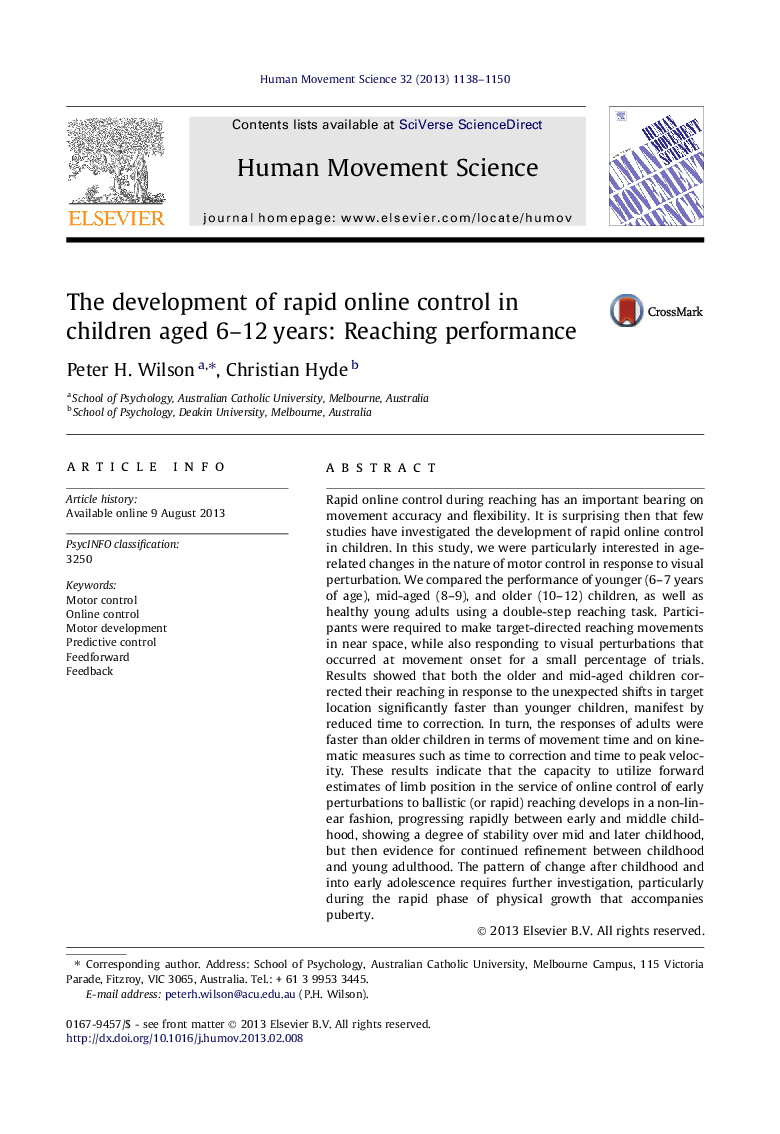| Article ID | Journal | Published Year | Pages | File Type |
|---|---|---|---|---|
| 928361 | Human Movement Science | 2013 | 13 Pages |
Rapid online control during reaching has an important bearing on movement accuracy and flexibility. It is surprising then that few studies have investigated the development of rapid online control in children. In this study, we were particularly interested in age-related changes in the nature of motor control in response to visual perturbation. We compared the performance of younger (6–7 years of age), mid-aged (8–9), and older (10–12) children, as well as healthy young adults using a double-step reaching task. Participants were required to make target-directed reaching movements in near space, while also responding to visual perturbations that occurred at movement onset for a small percentage of trials. Results showed that both the older and mid-aged children corrected their reaching in response to the unexpected shifts in target location significantly faster than younger children, manifest by reduced time to correction. In turn, the responses of adults were faster than older children in terms of movement time and on kinematic measures such as time to correction and time to peak velocity. These results indicate that the capacity to utilize forward estimates of limb position in the service of online control of early perturbations to ballistic (or rapid) reaching develops in a non-linear fashion, progressing rapidly between early and middle childhood, showing a degree of stability over mid and later childhood, but then evidence for continued refinement between childhood and young adulthood. The pattern of change after childhood and into early adolescence requires further investigation, particularly during the rapid phase of physical growth that accompanies puberty.
